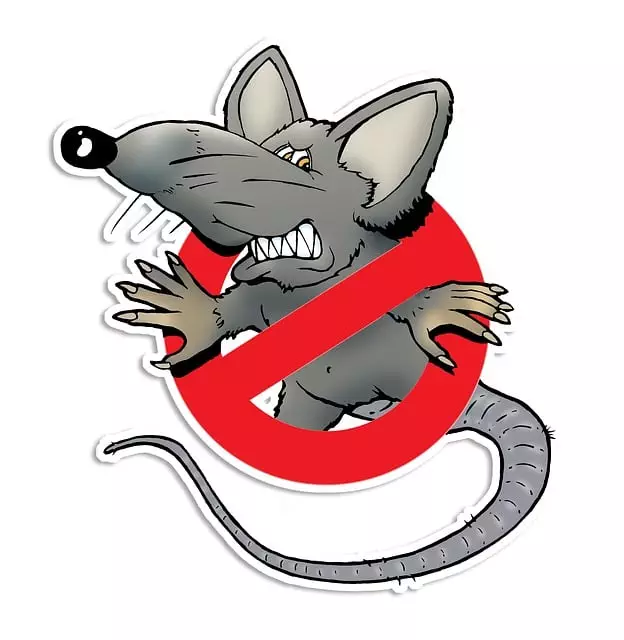Rodents like mice and rats are common household pests with rapid breeding rates, emphasizing the need for early detection. Homeowners should look out for signs such as droppings, gnaw marks, and odd smells. Regular inspections and proactive measures like sealing entry points and maintaining cleanliness are key to rodent control. Effective methods include live trapping, natural repellents, and integrated pest management (IPM). Professional inspectors offer thorough assessments using advanced tools, followed by tailored solutions. Post-treatment, maintaining a clean environment, regular inspections, and understanding local regulations prevent re-infestation.
Rodent infestations can pose significant health risks and property damage, making effective rodent control crucial. Understanding the common types of rodents, their behaviors, and identifying signs of their presence is essential for prompt action. This article guides you through every step of rodent management—from prevention strategies to safe treatment methods, professional inspections, post-treatment care, legal considerations, and more. Master the art of rodent control with these comprehensive insights.
Understanding Rodent Infestations: Common Types and Behavior

Rodent infestations are a common household problem, with mice and rats being the most frequent intruders. Understanding these infestations involves recognizing their behavior and types. Mice and rats exhibit distinct habits, with mice favoring smaller spaces and quicker movement, while rats tend to explore more open areas and require larger entry points. They both leave behind signs of their presence, such as droppings, gnaw marks, and distinctive odors.
These rodents are highly adaptable, capable of fitting through tiny gaps and navigating complex routes to find food and shelter. They breed rapidly, making early detection crucial for effective rodent control. Regular inspections are key to identifying potential entry points, nests, or signs of activity, allowing for prompt action to mitigate the infestation and maintain a pest-free environment.
Identifying Signs of Rodent Presence in Your Home or Property

Many homeowners might overlook the signs of rodent presence, but being able to identify them early is crucial for effective rodent control. Keep an eye out for telltale signs such as small droppings, chewed wires or materials, and distinct odours. Rodents also leave behind gnaw marks on objects, so inspect your property for any unusual damage, especially in hard-to-reach areas or places where food is stored.
Another way to detect their presence is by listening for faint scurrying sounds or squeaking noises in walls or attics. You may also notice holes or gaps in walls, floors, or ceilings, which indicate their entry points. Regular inspections, especially after meals or during the night when rodents are most active, can help you identify and address potential rodent infestations early on, ensuring a faster and more effective rodent control process.
Prevention Strategies: Keeping Rodents at Bay

Rodent control is a proactive approach to prevent and manage infestations, which is always more effective than curative measures. Implementing prevention strategies is key to keeping rodents at bay. Regular inspections around your property, especially in areas with potential food sources or hiding spots like attics, walls, and crawl spaces, can help identify entry points early on. Sealing gaps, cracks, and holes with appropriate materials creates physical barriers that deter rodents from entering. Maintaining cleanliness by regularly cleaning up food debris, pet food bowls, and garbage ensures there are no easily accessible food sources to attract them. Additionally, trimming vegetation and clearing clutter from the exterior of buildings can reduce hiding places and disrupt their life cycles.
Safe and Effective Rodent Control Methods

When it comes to rodent control, safety and effectiveness go hand in hand. It’s crucial to employ methods that not only eliminate current infestations but also ensure the well-being of your family and pets. Traditional chemical pesticides may be potent, but they pose significant health risks if misused or inadequately contained. As such, many professionals now recommend integrated pest management (IPM) strategies, which combine non-chemical tactics like sanitation, exclusion, and traps with minimal-risk chemicals when necessary.
Among the safe and effective rodent control methods, trapping stands out as a humane alternative to poison. Live traps allow captured rodents to be released away from your property, preventing potential reinfestation. Additionally, using natural repellents like peppermint oil or diatomaceous earth can deter rodents without causing them harm. These methods not only address the current problem but also help prevent future infestations by making your home less inviting to these unwanted guests.
Professional Rodent Inspection: What to Expect

When it comes to professional rodent inspection, you can expect a meticulous and comprehensive assessment of your property by experienced experts in rodent control. These inspectors are equipped with advanced tools and knowledge to identify signs of rodent activity and determine potential entry points. During the inspection, they will thoroughly examine exterior and interior areas, including walls, attics, basements, and crawl spaces, looking for evidence such as droppings, gnaw marks, or distinct smells.
The team will also check for visible rodents, using non-invasive techniques to observe their behavior and habits. They may employ specialized equipment like cameras and sensors to gain access to hard-to-reach areas, ensuring a complete survey. Once the inspection is complete, the experts will provide an in-depth report detailing their findings, offering tailored solutions for effective rodent control and prevention strategies.
Post-Treatment Care and Maintenance Tips

After a successful rodent control treatment, maintaining a clean and sealed environment is crucial for preventing re-infestation. Regularly inspect your home or property for any signs of rodents, such as droppings, chewed wires, or unusual noises in walls. Keep all food securely stored in airtight containers, and ensure garbage bins are tightly capped and regularly emptied.
It’s also important to seal entry points like gaps around pipes, wires, or doors to prevent new pests from entering. Maintaining a tidy home, eliminating potential food sources, and keeping areas free of clutter creates an unwelcoming environment for rodents, reinforcing your rodent control efforts.
Legal Considerations and Community Guidelines for Rodent Management

In many regions, rodent management is subject to strict legal considerations and community guidelines, reflecting a balanced approach to rodent control. These regulations aim to protect both public health and the environment while addressing human safety concerns. Property owners and managers must be aware of local laws regarding the use of traps, poisons, and other rodent control methods, ensuring compliance to avoid fines or legal repercussions.
Community guidelines often emphasize humane treatment of rodents, encouraging non-lethal methods where possible. This includes proper waste management, sealers, and exclusion techniques to prevent rodent entry. Adhering to these guidelines not only mitigates legal risks but also fosters positive relationships with neighbors and community stakeholders, promoting a safer, healthier living environment through effective yet responsible rodent control practices.
